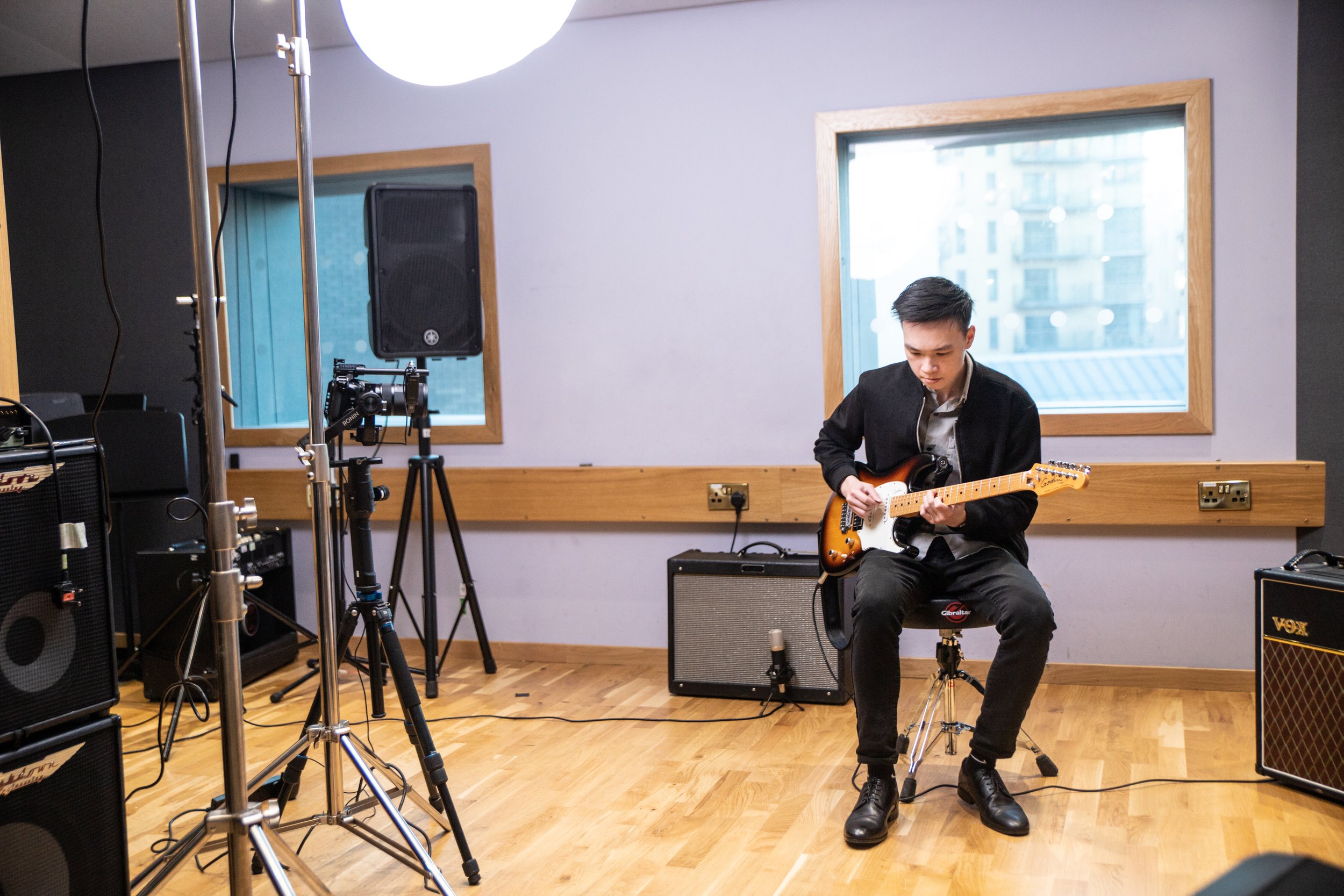





Student concert in the side room upstairs at Hyde Park Book Club. October 2023


This is a Stevie Wonder classic titled Isn’t She Lovely, arranged by myself as an unaccompanied guitar instrumental.

In this lesson we talk about power chords for beginners using open strings, and covering a technique called muting.

First ever student concert that took place in Jan 2023 at Hyde Park Book Club, Leeds.

Opening support act for Ray Greene (Santana’s singer) at Tapestry Arts, Bradford. October 2023.
Vocals and Bass: Kishore Budha
Guitar: Bryan Chung
Vocals: Lisa Crawford
Drums: Oli Reeves
Mojo Catfish is a Leeds-based electric blues band. We play a mix of original and reworked blues songs.

Song analysis of Don’t Worry Baby by Los Lobos to figure out what’s happening in the different sections.

This is a very common tune for players who are starting to get in touch with jazz since the chords are simple enough to understand and improvise on using pentatonic language (as Samson demonstrates!). The rhythm is also very easy to get in to from bossa comping to full-on funk it up! The challenge is to take a balance between playing pentatonic notes and adding in the occasional chord tone to show the chord changes, sounding more complex by following chromatic tones. We also play a slightly different turnaround at the end of every chorus - nothing beats a descending bass line!

Empty Pockets - Herbie Hancock
Written by famed jazz pianist Herbie Hancock (who wrote Watermelon Man and Cantaloupe Island), this tune has a thick and fuller texture on the recording as it features two horns. Translating the piano parts into a guitar trio setting required toning the atmosphere down a little.
Darn That Dream - Jimmy Van-Heusen
Once again experimenting with playing at different tempos, Darn That Dream is usually played as a ballad. After a heavily re-harmonised solo guitar introduction, the band kicks in with a medium swing more on the slow and steady side.
Count Every Star - Sammy Gallop
A simple 16-bar form which repeats itself and originally written as a popular song with vocals and lyrics, making this into an instrumental guitar trio version required some imagination in terms of arrangement. Without changing the catchy melody too much, we were able to introduce a constant key change in our arrangement.

In this lesson we explore the fundamental guitar techniques such as arching the fingers up, using finger tips, keeping wrists straight, and freeing up the thumb to allow for better hand positioning.

Sonnymoon for Two by Sonny Rollins
Added an intro section to add originality through arrangement. Referenced Grant Green’s No. 1 Green Street as both tracks are jazz blues standards in the key of B-flat.
Nica’s Dream - Horace Silver
Changing up the groove and rhythm often adds variety to the set, which is why this tune was chosen. It features a longer form of 32-bar AABA with a coda at the end, and an energetic latin drum groove.
Solar - Miles Davis
Although the chord changes in this jazz standard is straight-forward within a short form of 12 bars, playing it fast in an up-tempo swing feel is challenging, especially while keeping the fluency and integrity of the improvised melody lines. Added some originality by fitting the head (starting and ending melody section) into a 3/4 waltz rhythm.
![Tenor Madness - Sonny Rollins [performed by Bryan Chung]](https://i.ytimg.com/vi/JnBow2oQkms/hqdefault.jpg)
This 12-bar blues features a lot of jazz harmony whilst keeping the integrity of the one-four-five sounding chord progression. Tenor Madness has a repetitive head melody - perfect for coming up with something to improvise and jam on when time is tight!

Learnt this instrumental guitar piece by Mark Lettieri called Sunday Brunch. Score can be found in The Neo Soul Guitar Book published by Fundamental Changes.

Recorded using only a zoom field recorder in band rehearsal room.
Sam Jackson on bass and Richard Moulton on drums.

Recorded in Studio 422 in Leeds College of Music. Sam Quintana on bass and Oli Reeves on drums. Check out the turnaround!

In this video we are looking at three guitar specific techniques called bends, slides, and hammer-ons/pull-offs. We address what they are, why we use them (and in certain preferred contexts), and how to practise them.

In this lesson we cover the basics of counting rhythm correctly, along with subdivisions of 8th and 16th notes (aka quavers and semiquavers). By the end of it we will be able to play some famous rock riffs!